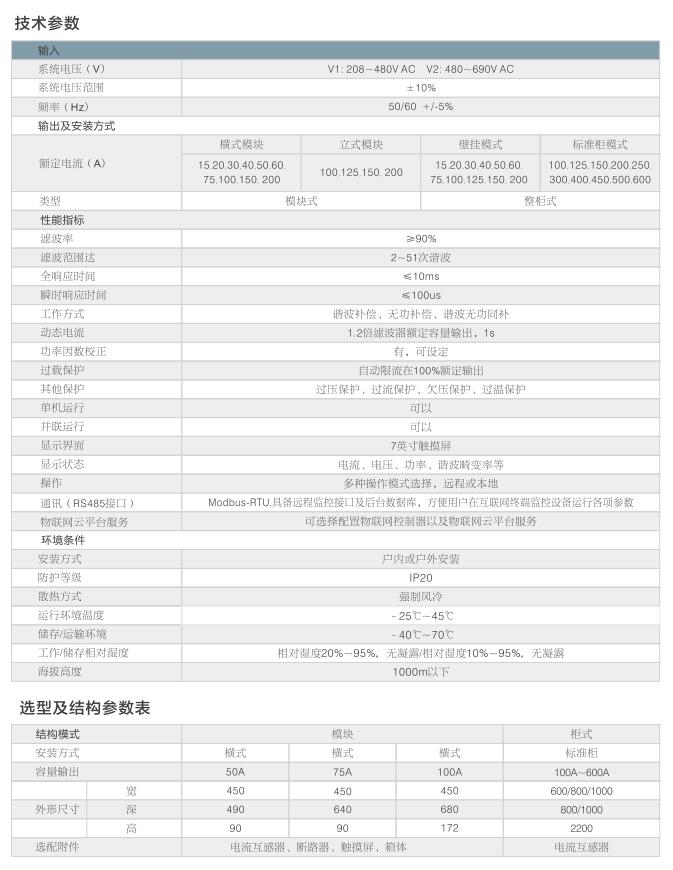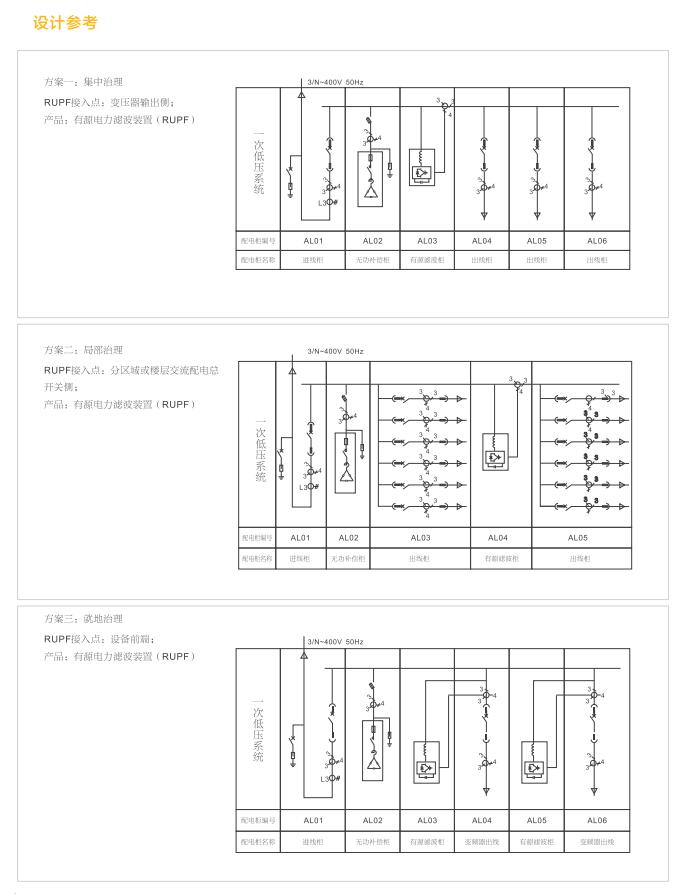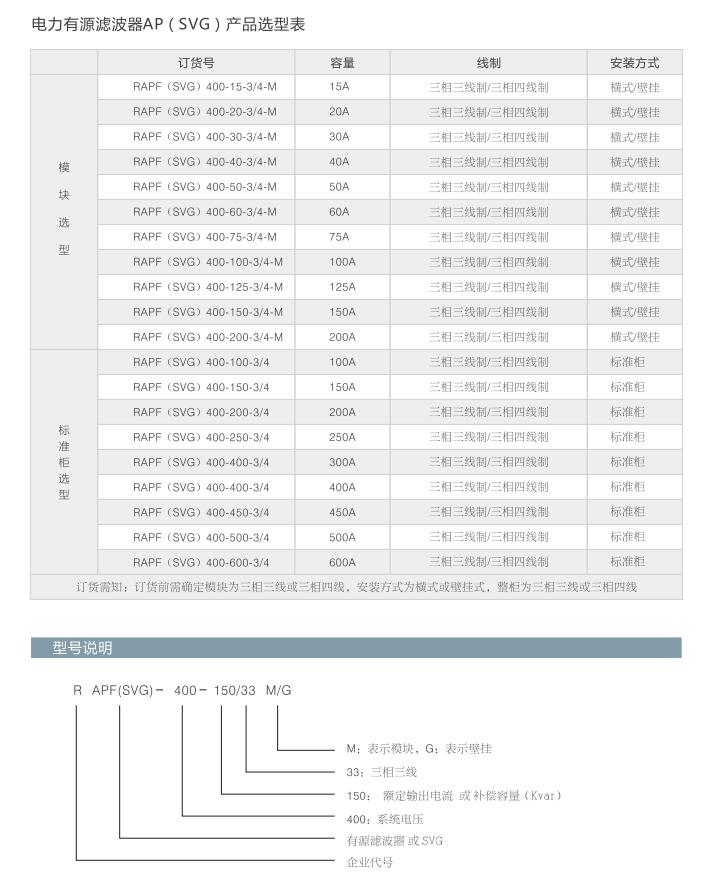Product features
The RAPF/SVG series active power filter is a new type of power harmonic control equipment made using modern power electronics technology and digital signal processing technology based on high-speed DSP devices. It consists of two main parts: the instruction current operation circuit and the compensation current generation circuit. Real time detection of harmonic currents and reactive currents in the power grid is achieved through external transformers, and the command current is obtained. The command current calculation circuit monitors the current in the line in real time, converts the analog current signal into a digital signal, and sends it to a high-speed digital signal processor (DSP) for signal processing, separating harmonics from fundamental waves, And in the form of pulse width modulation (PWM signal), a driving pulse is sent to the compensation current generation circuit to drive the IGBT or IPM power module, generating compensation current with the same amplitude and opposite polarity as the grid harmonic current and injecting it into the grid to compensate or cancel the harmonic current, actively eliminating power harmonics.
FEATURES
More features, more modes
·Harmonic compensation, reactive power compensation, and harmonic reactive power co compensation, with multiple uses for one machine.
·Equipped with harmonic division compensation function, capable of setting reactive power compensation ratio.
·A high-definition 7-inch Chinese color touch screen that displays real-time system and device operating parameters.
Comprehensive protection function, improving user application stability.
·The effective value peak double setting automatic current limiting algorithm can automatically limit the output line of the equipment to 100% output without overload risk when the load harmonic current is greater than the equipment output
·The protection function is complete, with multiple protection functions such as overcurrent, overvoltage, undervoltage, and overheating, ensuring the safe and reliable operation of the system.
Advanced control strategies and topology design
·Improved detection technology based on instantaneous reactive power theory, capable of real-time detection of harmonic currents, automatic tracking of load harmonic changes, with high controllability and fast responsiveness
·By adopting a unique phase-shift harmonic extraction algorithm, independent control of each phase can be achieved when the load is three-phase unbalanced. When the capacity is sufficient, the imbalance function can be optionally eliminated.
·Using LCL topology filtering, it will not introduce high-frequency 1GBT switch harmonic interference when outputting harmonic current, and is suitable for impedance of any on-site power grid system. No resonance will occur.
Highly integrated, modular, and serialized
·Modular design, small size, light weight, high power density, easy installation and maintenance.
·The combination of parallel machines meets different capacity requirements, improves equipment reliability and maintainability while achieving standardized production, and greatly facilitates system installation and maintenance.
·Single module independent air duct design can effectively isolate environmental dust adhesion and improve product heat dissipation efficiency.
Advanced user experience
·Fault self diagnosis and self start function, the device has a self recovery function for shutdown caused by non device issues. Before self recovery, automatic diagnosis of the external power grid and the device itself is required. Only after the diagnosis is passed can the device start automatically. Within 30 minutes, it will self recover three times. If it cannot start normally, stop the machine and give a fault alarm to the upper computer transmission device, and light up the device's own fault indicator light.
·The IoT monitoring function allows the device to collect three-phase system voltage, current, active power, reactive power, power factor, harmonic content, device output harmonic current and other data at certain time intervals, and upload them to the database through the GPRS module. Terminal web pages and apps can display the current and historical data mentioned above, perform necessary filtering functions on the data, and output it in Word or PDF format, displaying and recording current and historical faults; Remote apps and terminal web pages can take necessary control and parameter settings for devices, such as start stop, overcurrent value settings, etc.


